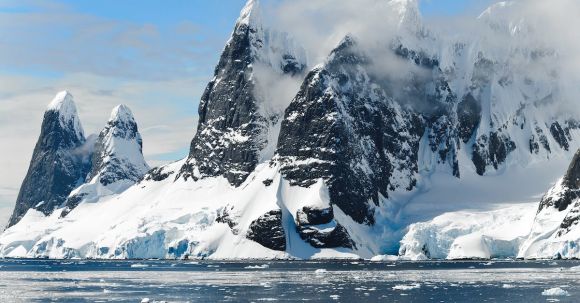In our increasingly interconnected world, it can be challenging to find places that remain untouched by human activity. However, there are still a few remote corners of the Earth where wildlife thrives in isolation. These habitats, far removed from civilization, offer a glimpse into the natural world untouched by human intervention. In this article, we will explore some of the most isolated wildlife habitats on our planet.
The Daintree Rainforest: A Tropical Paradise
Located in Queensland, Australia, the Daintree Rainforest is one of the most ancient rainforests in the world. Its isolation is due to its unique geography, as it is separated from other rainforests by mountains and the Coral Sea. This isolation has allowed the Daintree Rainforest to develop its own distinct ecosystem, home to an incredible array of plants and animals, including the rare southern cassowary.
The Galapagos Islands: A Living Laboratory
Made famous by Charles Darwin’s studies, the Galapagos Islands are a remote archipelago in the Pacific Ocean. These volcanic islands are renowned for their unique wildlife, including giant tortoises, marine iguanas, and blue-footed boobies. The isolation of the Galapagos Islands has allowed species to evolve in different ways, leading to the development of new species found nowhere else on Earth.
The Amazon Rainforest: A Biodiversity Hotspot
Covering vast areas of South America, the Amazon Rainforest is one of the most biodiverse habitats on the planet. Its sheer size and isolation have allowed countless species to thrive, many of which have yet to be discovered by scientists. From jaguars to anacondas, the Amazon Rainforest is home to some of the most iconic and elusive creatures on Earth.
The Arctic Tundra: A Cold Desert
While it may not be as lush as rainforests, the Arctic Tundra is a unique and isolated habitat nonetheless. Spanning the northernmost regions of North America, Europe, and Asia, the tundra is characterized by its harsh, cold climate and treeless landscapes. Despite these challenging conditions, a surprising array of wildlife can be found here, including polar bears, reindeer, and arctic foxes.
The Namib Desert: A Desert of Extremes
Stretching along the coast of Namibia in southwestern Africa, the Namib Desert is a desolate yet captivating landscape. With its towering sand dunes and sparse vegetation, it may seem inhospitable to life. However, the Namib Desert is home to a number of unique species, such as the iconic welwitschia plant and the elusive desert-adapted elephants.
Conclusion: Preserving Isolated Wildlife Habitats
While these isolated habitats offer a glimpse into the natural world untouched by human activity, they are not immune to the threats facing wildlife worldwide. Climate change, deforestation, and habitat destruction pose significant challenges to these delicate ecosystems. It is crucial that we recognize the value of these isolated habitats and take steps to preserve them for future generations.
In conclusion, the most isolated wildlife habitats on Earth are precious treasures worth protecting. From the Daintree Rainforest to the Galapagos Islands, these remote corners of the planet offer a unique opportunity to observe nature in its purest form. By recognizing the importance of these isolated habitats and taking action to conserve them, we can ensure that they continue to thrive for years to come.





